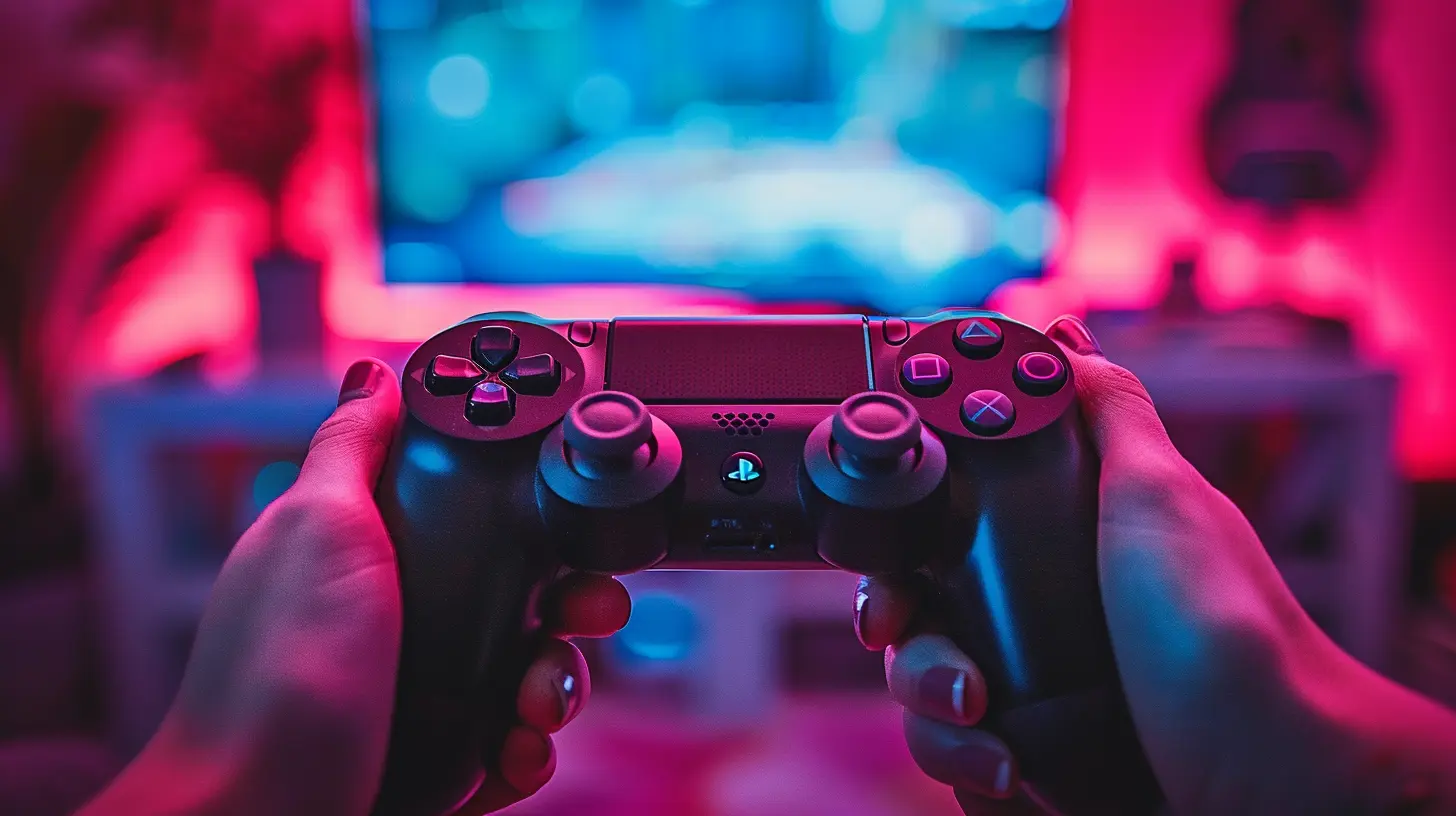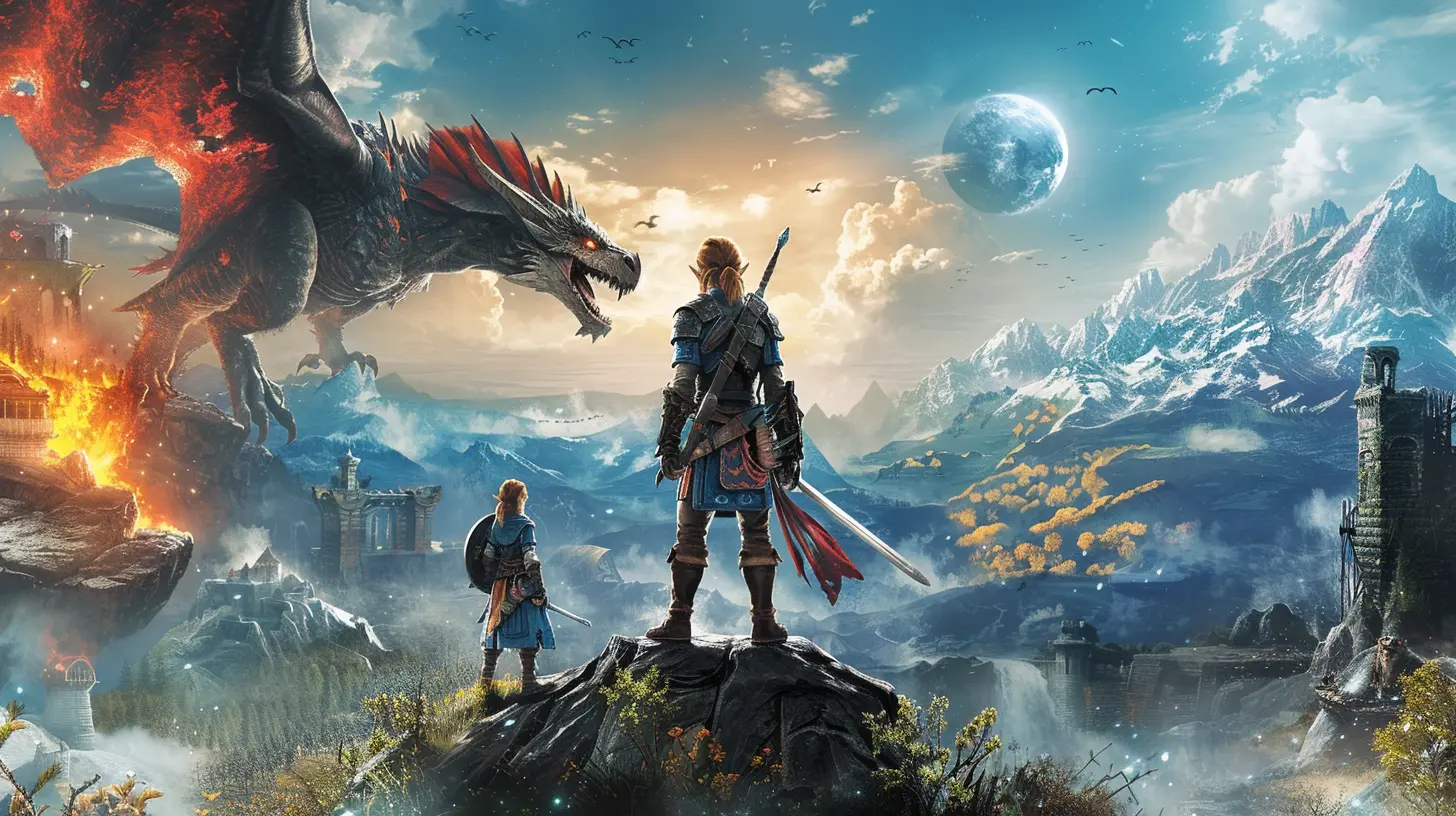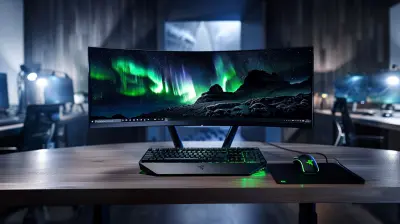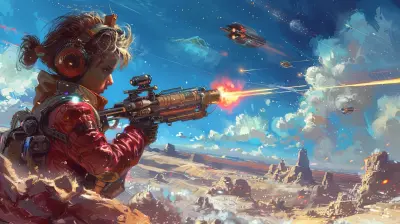How to Balance Visual Quality and System Performance in Gaming
23 October 2025
Gaming's come a long way from pixelated sprites and basic soundtracks. Today, we're chasing lifelike graphics, silky smooth frame rates, and immersive gameplay. But there's one big challenge we all face at some point—finding that sweet spot between stunning visuals and solid performance.
If you've ever tweaked your graphics settings for hours, trying to squeeze out a few extra frames per second (FPS) without turning your high-res world into a blurry mess, you're in the right place. Let's dive into how to balance visual quality and system performance in gaming so you can get the most out of your setup—without sacrificing too much of either.
Why Finding the Right Balance Matters
Imagine hitting the final boss in an intense fight, and your game suddenly stutters or freezes. That moment? It ruins the experience. No matter how beautiful the graphics look, gameplay always needs to come first. On the flip side, playing with ultra-low settings on a high-end rig just feels like a waste.Getting the balance right means:
- Smooth gameplay: Fewer lags, more wins.
- Immersive visuals: Beautiful worlds that pull you in.
- No overheating or crashes: Your rig stays cool and efficient.
- Longer hardware lifespan: Less strain equals more years out of your machine.
Start With Your System Specs
Before you mess with any settings, you’ve got to know your gear. A high-end gaming PC can run things maxed out, but mid-range or budget systems might need some tweaking.Key components to consider:
- GPU (Graphics Card): The heart of gaming visuals. Determines how well your system renders textures, lighting, shadows, and more.- CPU (Processor): Handles the game logic, AI, and physics.
- RAM: Affects how smoothly your game loads assets.
- Storage (SSD vs HDD): SSDs drastically cut down load times.
- Cooling system: Impacts how long your PC can run at high settings without throttling.
If you're not sure where your rig stands, tools like CPU-Z, Speccy, or using the Windows Task Manager can give you a quick breakdown.
Understand Graphics Settings (Without Going Cross-Eyed)
Now, this part trips up a lot of folks: graphics settings can look like a foreign language. Let’s break down some of the most common ones in gamer-friendly terms.1. Resolution
This is your screen’s pixel count. Higher resolution = sharper image, but also = heavier load.- Best Practice: Play at your monitor’s native resolution if you can. If FPS drops too low, try a step down.
2. Texture Quality
Controls how detailed surfaces look—think character skins, buildings, terrain.- Tip: Modern GPUs handle high textures well if you’ve got enough VRAM. But if you start seeing stutters, dial this back.
3. Anti-Aliasing (AA)
Smooths out jaggy edges. The better the AA, the cleaner the edges—but also the more taxing it is.- Options: FXAA (lighter), MSAA (heavier), TAA (blurry but effective).
- Pro Tip: FXAA is a good middle ground for most gamers.
4. Shadow Quality
Fancy shadows look great but eat up a TON of performance.- Suggestion: Medium shadows still look decent without frying your GPU.
5. Draw Distance & Level of Detail (LOD)
How far you can see detailed objects in the game world.- Hack: Lower LOD slightly for more FPS without ruining visuals.
6. V-Sync
Eliminates screen tearing (when your monitor and GPU are out of sync), but can introduce input lag.- Best For: Casual players with a screen tearing issue. Competitive gamers usually turn this off.
Frame Rate vs Visual Quality: Who Wins?
It depends on what you're playing.- Fast-paced shooters (like Apex Legends or Warzone)? Always lean toward higher FPS. Every millisecond counts.
- Story-based games (like Red Dead Redemption 2 or The Last of Us)? You can afford to go for higher visual quality, even if FPS dips to 30–40.
Here’s a simple rule:
> If gameplay feels choppy, drop visual settings. If it feels smooth, you’ve got room to beef up the visuals.
Use In-Game Benchmarks and FPS Counters
Most modern games come with built-in benchmarks—handy tools that simulate gameplay and show you performance results. It's like a test drive for your settings.Additionally, pop open an FPS counter (Steam has one built-in, or use third-party tools like MSI Afterburner) to monitor how changes affect real-time performance.
Dynamic Resolution Scaling: Your Secret Weapon
Some newer games offer a feature called Dynamic Resolution Scaling (or DRS). It’s exactly what it sounds like—it adjusts your resolution on the fly, depending on how your system is handling things.This means:
- When the action heats up, it lowers resolution a bit to save frames.
- During chill moments, it cranks visuals back up.
It’s not perfect, but it keeps things smooth without much manual tweaking.
Use Presets Wisely (But Don’t Rely on Them Blindly)
Game developers usually include graphic "presets" (Low, Medium, High, Ultra, etc.) for a reason. These are helpful starting points, especially if you’re unsure where to begin.Here's the trick:
- Pick a preset close to your hardware level.
- Then tweak individual settings one by one to fine-tune your experience.
Some settings (like shadows or motion blur) have a high performance cost but low visual gain. Those are the ones you want to dial down first when chasing higher FPS.
Tweak Your Windows and Driver Settings
Performance isn’t just about what's inside the game. Your OS and drivers play a role too.Keep Drivers Updated
Always update your GPU drivers (NVIDIA or AMD). They often include optimizations for new games.Adjust Windows Settings
- Set your PC to High Performance mode (under Power Options).- Turn off background apps.
- Disable overlays (Discord, Steam) if they eat up resources.
Don't Forget About Cooling and Thermals
Balancing graphic settings is great, but if your system overheats, it's game over.- Clean your fans.
- Ensure proper airflow.
- Consider undervolting if you're comfortable with it.
- Use tools like HWMonitor to keep tabs on temp.
Overheating can cause performance throttling, crashes, and long-term damage.
Upgrade Smartly (If Needed)
Sometimes, no amount of tweaking can save aging hardware. But that doesn’t mean you need to splurge on a whole new rig.Most impactful upgrades:
- GPU: For better frame rates and higher visual settings.- RAM: If you're under 16GB, upgrade for smoother gameplay.
- SSD: Drastically reduces loading times.
You don’t always need the latest and greatest—just something that keeps up with your favorite games.
Use Game-Specific Optimization Tools
Some games come with their own optimizers—like NVIDIA’s GeForce Experience or AMD’s Radeon Software.They scan your system and recommend optimal settings. It's a great starting point, though you may still want to tweak based on personal preference.
Know When to Sacrifice Visuals
Sometimes you've got to make tough calls.Motion blur? Turn it off. Most gamers hate it anyway.
Lens flares? Cool in theory, annoying in practice.
If a setting doesn’t add to your enjoyment but eats performance, it’s not worth keeping.
Final Thoughts: Balance Is a Moving Target
Here’s the thing: no one-size-fits-all guide works forever. As games evolve, so do settings, hardware, and performance demands.But if you know how to read your system, what settings matter most, and how to test changes, you're already ahead of the curve.
Think of it like tuning a guitar. One string out of sync can throw off the whole harmony. But when everything’s balanced—ah, sweet, sweet music... or in this case, buttery-smooth gameplay.
TL;DR (Too Long; Didn’t Read)
- Know your system specs and limits.- Prioritize FPS in fast games, visuals in slow ones.
- Tweak heavy settings like shadows and AA first.
- Use in-game benchmarks and FPS counters.
- Keep drivers updated and temps under control.
- Upgrade smart—not blindly.
- Find your personal balance and keep adjusting as needed.
You don’t need to choose between beauty and performance. With the right tweaks, you can absolutely have both.
all images in this post were generated using AI tools
Category:
System RequirementsAuthor:

Brianna Reyes
Discussion
rate this article
1 comments
Robert McRae
Balancing visual quality and system performance is an art that enhances the gaming experience. It’s essential to prioritize frame rates for smooth gameplay while selectively adjusting graphics settings. Every player’s setup is unique, so finding that sweet spot allows us to enjoy immersive visuals without sacrificing performance. Happy gaming!
October 25, 2025 at 5:03 AM

Brianna Reyes
Absolutely! Striking that balance is key to maximizing enjoyment. Every player's setup is different, so tailoring graphics settings for optimal performance is crucial. Happy gaming!

